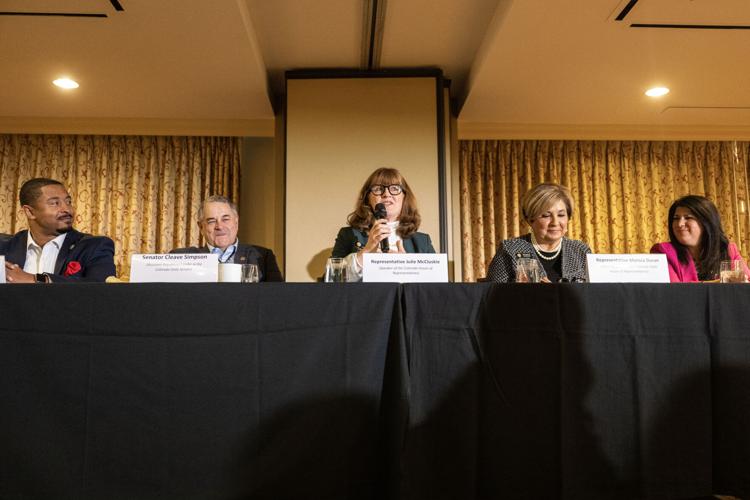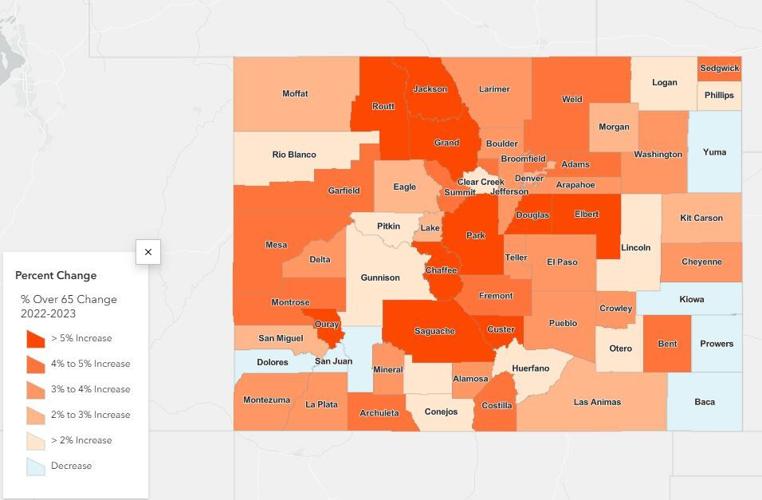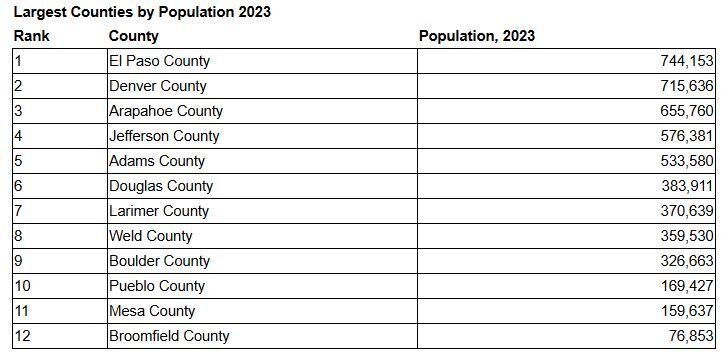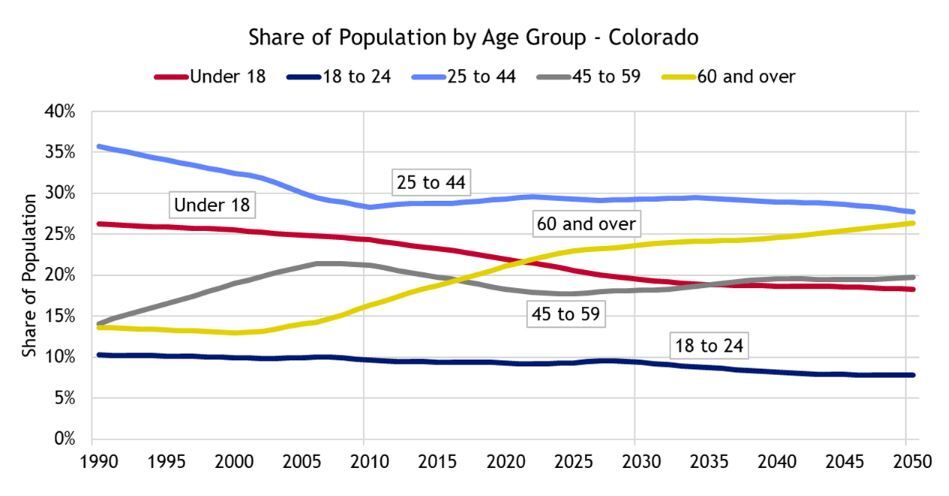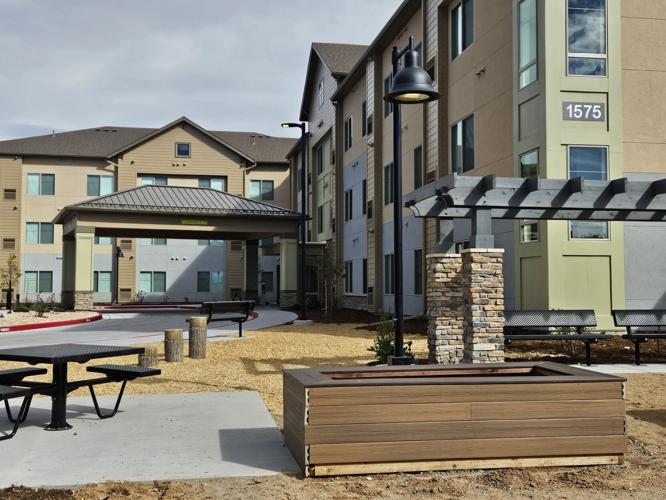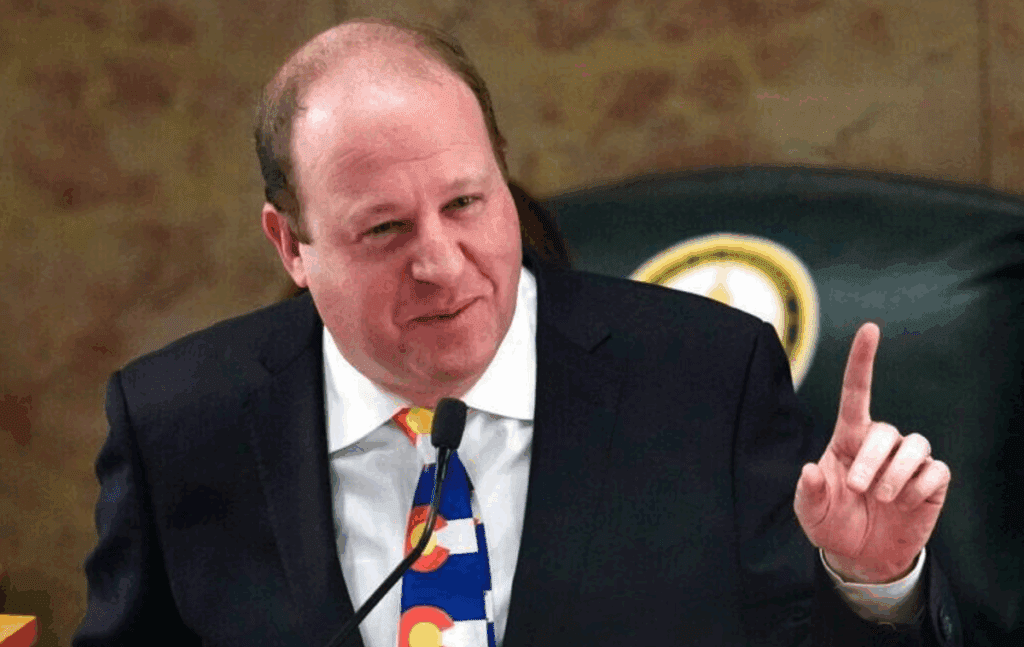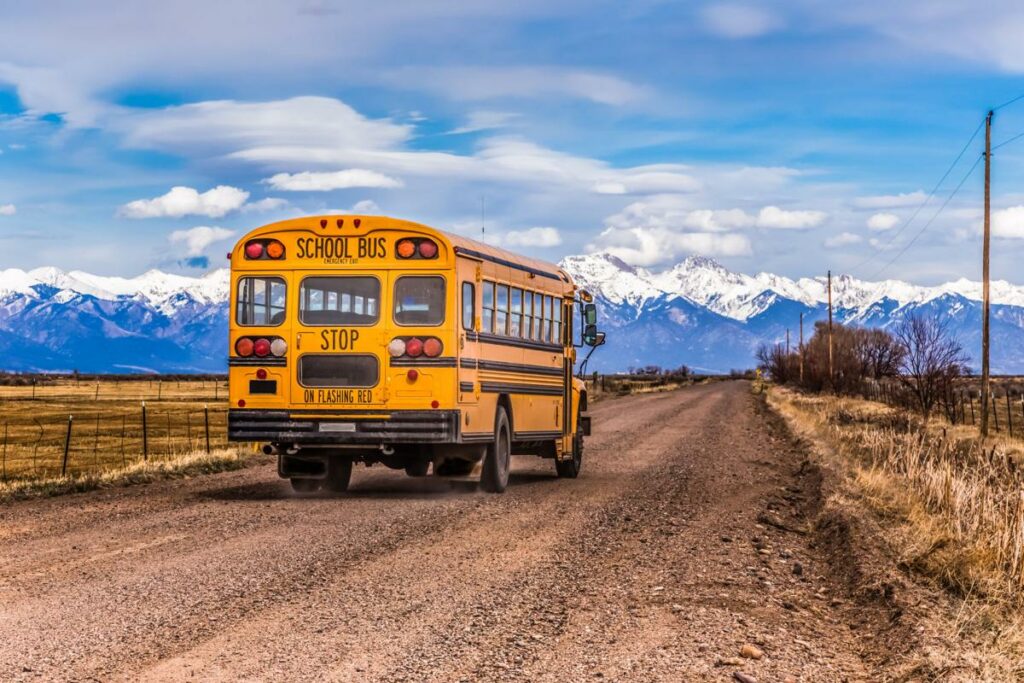A graying Colorado: State grapples with fast growing older population | COVER STORY
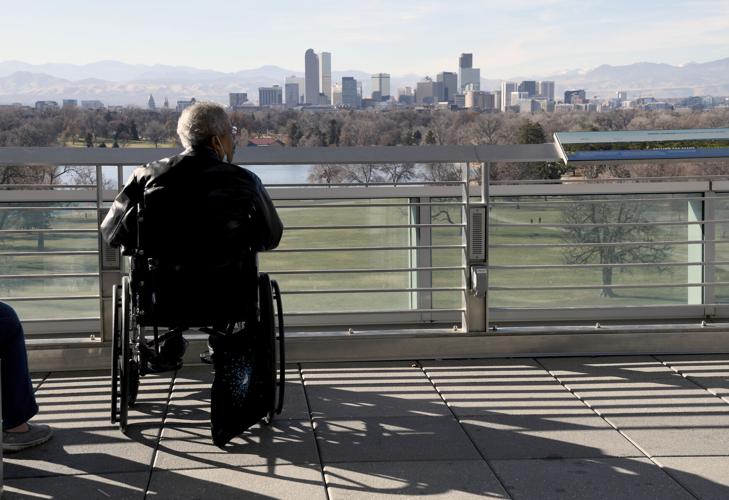
Walter Hill, of Westminster, Colo., enjoys the warm weather and the view of downtown Denver on Friday, Dec. 3, 2021. Colorado's older population is growing fast, with ramifications for healthcare, housing and even student enrollment. (AP Photo/Thomas Peipert)
Luige Del Puerto luige.delpuerto@coloradopolitics.com
“The only reality in the world is that we are going to get older and we’re going to die.”
Nobody can escape that reality, according to Christian Itin, a member of the Colorado Strategic Action Group on Aging.
“I think we need to remind folks that this will happen to me,” he said. “It will happen to you. It’ll happen to your family. We can’t put our heads in the sand and hide from that reality.”
In Colorado, the older population is growing fast, with ramifications for the major challenges the state already faces, notably housing, healthcare costs and workforce needs. It also affects student enrollment, which, in turn, means a direct impact on school financing.
Many have sounded the alarm over Colorado’s graying population, saying this requires more attention and careful planning, particularly since this trend, if it persists, will fundamentally alter the state’s priorities.
Consider this: Between 2010 and 2020, the number of people 65 and over in Colorado grew at the nation’s second-fastest pace, falling only behind Alaska. Over the next decade, this population is projected to increase by 36%, equaling about 317,000 more older adults.
In 2023, the state’s older population equaled nearly a million residents statewide.
The “phenomenon” is compounded by the fact that people live longer and younger adults are having fewer children, according to Itin, a professor in the Department of Social Work at Metropolitan State University of Denver.
This trend will affect everything from affordable housing, the economy, the workforce, and, most importantly, costs to the healthcare system, Itin warned. Some policymakers have recognized the trend, and they, too, are worried about its repercussions, which, in some areas, have already started.
For Attorney General Phil Weiser, it has become a public safety issue. His office, he said, is working on implementing safeguards for residents who tend to be more vulnerable because they grew up in a more “trusting time” — and scammers are pouncing.
For Gov. Jared Polis, this means commissioning studies and putting plans into motion before he leaves office.
At the state legislature, Democratic House Speaker Julie McCluskie and Republican Rep. Ty Winter may not see eye to eye on strategy but they agree that older residents living in Colorado’s rural communities need better services and healthcare.
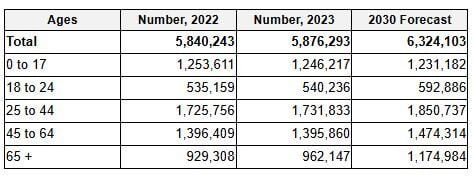
This chart shows population projections in Colorado. (COURTESTY: Colorado State Demography Office)
Colorado state demographer
The future looks gray
In November, while serving on a panel to discuss healthcare services, McCluskie noted that many of the woes state lawmakers grapple with today arise out of the fact that “Colorado is getting older and grayer.”
“This year, from a demographic perspective, we are seeing enrollment in our public schools decrease, while we are seeing an increase in our (60 and over) demographic,” she said. “We have to grapple with this demographic shift.”
Student enrollment is directly tied to funding.
Colorado demographer Kate Watkins said it’s important to understand why the state is an emerging leader in the 60 and older population. Given that Colorado is one of the youngest states in the nation, it is fitting that the aging population is just now starting to catch up, she said.
“Largely, we have aged in place,” Watkins said. “And these are trends we are seeing across the U.S. and globally. We’re having fewer children, and we are having them later in life, and that’s simply a recipe for getting older and growing that population.”
Just under 10% of the Colorado’s population was over 65 in 2000. That’s compared to the 12% U.S. average and 18% in Florida, which is known attracting a retired community. In 2023, the 65 and over population accounted for over 16% of Colorado’s population, and by the year 2050, the demographic will account for over 20% of the population.
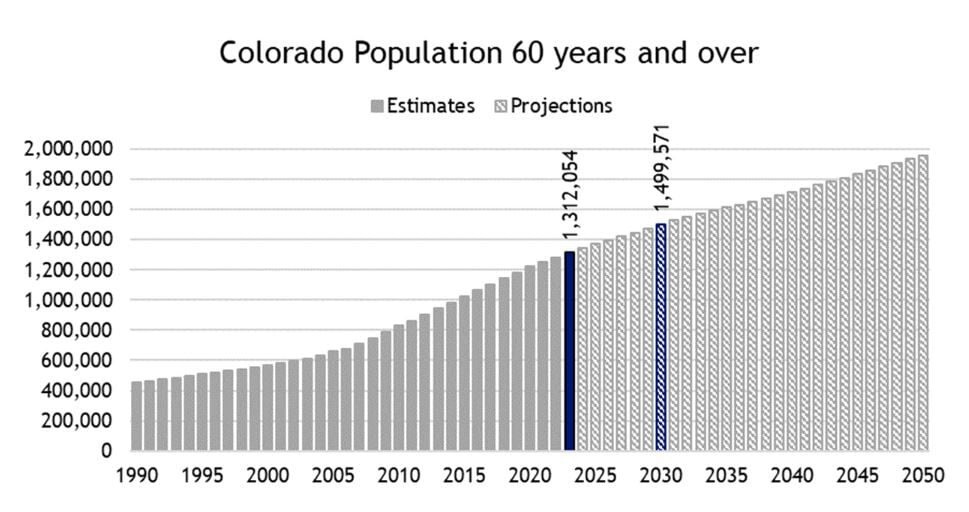
This chart shows population over 60 in Colorado. (COURTESTY: Colorado State Demography Office)
Colorado state demographer
Some 1.3 million Colorado citizens are over 60, according to the state’s Multi-Sector Plan on Aging.
Given this reality, Lt. Governor Dianne Primavera said when she was with the General Assembly in 2015, the legislature passed House Bill 1033, which established the governor-appointed Strategic Action Planning Group on Aging.
Watkins said that, unlike Florida, Colorado’s older population did not necessarily migrate here. Between 2000 and 2010, older adults migrating from other states only accounted for 6,000 of the 133,553 increase.
Polis noted that migrating older residents choose Colorado over warmer states, such as Arizona and Florida, because of its great outdoors and healthier lifestyle.
Still, aging in place is a trend that Watkins said will continue for decades.
Watkins said the current over-65 population, consisting primarily of Baby Boomers, came to Colorado mostly in the 1970s and 1980s. And that population will only get grayer, as the 65-and-over are not likely to leave, which means the state must prepare for the 75-and-over and 80-and-over citizens.
Over the next decade, Watkins anticipates there will be about 233,000 adults over 75.
“So, thinking about, you know, what that means for health care demands, transportation and accessibility demands, I think we’re really going to start to see some shift is in what our older adults both need and want.”
Colorado faces cost, workforce woes
An aging population means healthcare is a primary concern in Colorado and nationally. The rising cost of Medicare is at the forefront of those worries.
Adults over 65 traditionally use Medicare, a federal insurance program for older adults and young people with disabilities. In 2024, just over a million people were on Medicare in Colorado.
Before moving to Medicare at 65, aging adults also rely on the state’s Medicaid program in higher numbers. Unlike Medicare, Medicaid provides healthcare coverage for low-income families. Watkins, the demographer, noted many of them are in their 50s and 60s.
In Colorado, Medicaid costs the state around $13 billion a year.
McCluskie, who served on the Joint Budget Committee last year, said accounting for Medicaid costs — the federal government picks up part of the tab for those expenses in several states, including Colorado — is a significant undertaking. Medicare costs the federal government an estimated $63 billion annually.
According to the National Council on Aging, almost 95% of adults over the age of 60 have a chronic health condition, pushing the importance of accessibility and affordability.
Winter, the legislator, said a major problem, besides costs to Medicaid and Medicare, is the lack of specialized healthcare services in rural areas.
“You know, a lot of my constituents and people in rural Colorado have to travel up to an hour to be able to see any type of specialty doctor, whether it’s an orthopedic surgeon, a heart doctor,” Winter said. “You know, we really worked on the telehealth piece of things here at the state legislature, but still, at the end of the day, it’s great for minor things.”
He said: “As we see our community age, I mean, we need to take better care of them, and I think that their having access to in-person healthcare is important.”
Winter said that even in-home care is a challenge in rural Colorado because of the economy. Without jobs, kids leave their parents and grandparents behind to find work in bigger cities.
Sara Schueneman, the Colorado state director for AARP, said another growing issue is who cares for older adults. Many people are turning to family and friends for in-home care, she said.
“This is essentially serving as an unpaid family caregiver,” she said.
Schueneman estimated that Colorado has around 600,000 older adults being cared for by family and friends, while noting there is something to the service because it keeps them out of the assisted living centers and nursing homes, which mostly work on waitlists.
Out of pocket, Schueneman estimated a family member or friend caring for an older person spends an estimated $7,200 out of pocket per year. Schueneman said that to help offset those costs, the state should consider tax incentives.
“We should be utilizing more tax credits because this is saving the state money in the long run,” she said. “It saves the state a lot more money by keeping seniors out of assisted living. We have more older adults than kids under 18 in the state. They definitely need to be prioritized.”
‘No transitional housing for them to go to’
Schueneman said the reality is that older adults generally want to stay in their homes — in the communities they have lived. That puts added pressure on the affordable housing market.
Winter said the lack of transitional housing is a major problem.
“You know, in rural Colorado, we’re no different than anywhere else when it comes to finding housing for families,” Winter said. “You have some of these people where their kids grow up, they move out of the home, they lose their spouse, and it’s just them living there. But there is no transitional housing for them to go to.”
With the higher cost of living, property tax increases, and other factors, seniors tend to stay in family homes even after retiring.
Polis and Primavera said the General Assembly has made strides to address the transitional housing issue. To incentivize seniors to scale down, the General Assembly has passed Senate Bill 174, which requires local jurisdictions to produce housing needs and assessment action plans for housing. House Bill 1007 from 2024 prohibits residential occupancy limits, which means cities, towns, and counties cannot limit the number of people living in a single-family home.
Polis said fewer restrictions on accessory dwelling units, set forth in House Bill 1152 from last year, would allow for more “mother-in-law” units, which would, in turn, help family caregivers live nearby and encourage the aging in place principle.
Critics have decried some of these policies as wrestling away local control and centralizing solutions when municipal and county governments know their needs best.
With more options becoming available to encourage older residents to move out of their family homes, Denver metro realtor Andrew Malkoski said work is still needed to educate and inform them about options.
Malkoski said the Colorado housing supply is increasing being compared to the crisis levels from three to five years ago. The Denver metro market has had a 68% increase in supply since April 2024.
He added that another another problem that is out of the state’s hands — interest rates are not coming down. He said during the COVID pandemic, interest rates dropped dramatically, allowing homeowners to refinance. Until rates come down again, he said, homeowners will continue to be reluctant to sell.
The realtor said another issue to consider in the housing market in the upcoming decade is assets and what will happen to them.
“As the Baby Boomers and generation above them pass away, that starts to move the wealth down to the Generation X and Millennials,” Malkoski said. “One of the things we stand to see here in the next five to 10 years is the release of a lot of real estate currently being held.”
Malkoski said it will be interesting to see if the heirs of this real estate keep it, sell it, or rent it out.
A vulnerable demographic
Weiser said that, in his nearly eight years of leading the state office, he is more cognizant of the growing dangers out there for what he called a very “trusting generation of folks.”
Weiser said the World War II and Baby Boomer generations “grew up in a much more trusting and trustworthy world. That means when people call them, they believe they are talking to real people. When people reached out and said something bad had happened, you thought something bad had happened.”
The attorney general said a significant challenge for his office is educating senior citizens on the dangers, no matter how real they look and feel.
There are always a variety of scams that look and feel real, Weiser said. From getting a call from the “Social Security Administration,” saying a person is behind on their taxes, to a real-looking bill charging fake toll road expenses, older adults often take calls and emails seriously and usually will pay them for fear of getting in trouble.
Weiser said technology has allowed scammers to obtain photos and voice recordings of a person’s family members to create real-sounding scams, in which they call and say they are in trouble and need money fast.
The official said artificial intelligence is allowing scammers to be bolder. The cost of producing a scam is also getting cheaper. AI experts said what once cost a scammer $4.60 to create a “deepfake” message now costs about 12 cents.
Weiser said while punishing scammers is a priority, his office has also been reaching out to older adults through education programs, such as by hosting seminars on the dangers of scams and what to do if an email, phone call, or snail mail letter doesn’t seem right.
According to AARP, older Americans lose an estimated $28.3 billion annually to financial exploitation of elders, which includes scams from strangers — as well as from those they know.
As generations age, Weiser said technology will continue to advance, meaning once they turn old and gray, today’s younger people will likely be targeted for scams, too.



